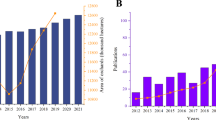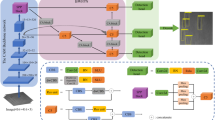Abstract
Automatic identification of characters marked on billets is very important for steelworks to achieve manufacturing and logistics informatization management. Due to the presence of adhesions, fractures, blurs, and other problems in characters painted on billets, character recognition accuracy with machine vision is relatively low, and hardly meets practical application requirements. To make the character recognition results more reliable and accurate, an identification results classification and post-processing method has been proposed in this paper. By analyzing issues in the image segmentation and recognition stage, the recognition result classification model, based on character encoding rules and recognition confidence, is built, and the character recognition results can be classified as correct, suspect, or wrong. In the post-processing stage, a human-machine-cooperation mechanism with a post-processing interface is designed to eliminate error information in suspect and wrong types. The system was developed and experiments conducted with images acquired in an iron and steel factory. The results show the character recognition accuracy to be approximately 89% using the character recognizer. However, this result cannot be directly applied in information management systems. With the proposed post-processing method, a human worker will query the suspect and wrong results classified by the system, determine whether the result is correct or wrong, and then, correct the wrong result through the post-processing interface. Using this method, the character recognition accuracy ultimately improves to 99.4%. Thus, the results will be more reliable applied in a practical system.







Similar content being viewed by others
References
Alexandria AR, Cortez PC, Felix JHS et al (2014) An OCR system for numerals applied to energy meters. IEEE Latin Am Trans 12(6):957–964
Deng CG, Xiang ZQ, Xie JC et al (2010) Design and study on marking system online for steel products. Comput Integr Manuf Syst 16(9):1859–1865
Agarwal K, Shivpuri R (2014) Knowledge discovery in steel bar rolling mills using scheduling data and automated inspection. J Intell Manuf 25(6):1289–1299
Jia HB, Murphey YL, Shi JJ (2004) An intelligent real-time vision system for surface defect detection. In: Proceedings of the 17th international conference on pattern recognition, Cambridge, UK, pp 239–242
Zhu JN, Mae Y, Minami M (2007) Finding and quantitative evaluation of minute flaws on metal surface using hairline. IEEE Trans Ind Electron 54(3):1420–1429
Bulnes FG, Usamentiaga R, Garcia DF (2011) Vision-based technique for periodical defect detection in hot steel strips. In: Proceedings of IEEE international conference on industry applications society annual meeting, Orlando, FL, pp 1–8
Choi SH, Yun JP, Sim SB (2010) Edge-based text localization and character segmentation algorithms for automatic slab information recognition. In: Proceedings of IEEE international conference on image analysis and signal processing, Zhejiang, China, pp 387–392
Bulnes FG, Usamentiaga R, Garcia DF (2011) Detection of periodical patterns in the defects identified by computer vision systems. In: Proceedings of IEEE international conference on intelligent systems design and applications, Cordoba, Spain, pp 301–306
Li P, Wu SB, Wang LN et al (2013) Automatic recognition system of plate character based on machine vision. Metall Ind Autom 37(4):12–15
Novak V, Hurtik P, Habiballa H et al (2014) Recognition of damaged letters based on mathematical fuzzy logic analysis. J Appl Logic 189(2):497–506
Mi ZZ, Xie ZJ, Liu Q (2016) Study of heavy rail mark recognition method based on PSO-SVM. Mod Sci Instrum 6:87–90
Zhao QJ, Cao P, Tu DW (2014) Toward intelligent manufacturing: label characters marking and recognition method for steel products with machine vision. Adv Manuf 2(1):3–12
Huang GB, Kae A, Doersch C et al (2012) Bounding the probability of error for high precision optical character recognition. J Mach Learn Res 13(1):363–387
Rico-Juan JR, Calvo-Zaragoza J (2014) Improving classification using a confidence matrix based on weak classifiers applied to OCR. Neurocomputing 151:1354–1361
Navarro-Cerdan JR, Arlandis J, Llobret R et al (2015) Batch-adaptive rejection threshold estimation with application to OCR post-processing. Expert Syst Appl 42(21):8111–8122
Qiu Q, Li Z, Ahmed K et al (2016) A neuromorphic architecture for context aware text image recognition. J Signal Process Syst 84(3):1–15
Zhu A, Gao R, Uchida S (2016) Could scene context be beneficial for scene text detection? Pattern Recognit 58:204–215
Quehl B, Yang H, Sack H (2015) Improving text recognition by distinguishing scene and overlay text. In: Proceedings of SPIE the 7th international conference on machine vision. doi:10.1117/12.2181370
Serrano N, Civera J, Sanchis A et al (2013) Effective balancing error and user effort in interactive handwriting recognition. Pattern Recognit Lett 37(1):135–142
Betta G, Capriglione D, Corvino M et al (2015) A proposal for the management of the measurement uncertainty in classification and recognition problems. IEEE Trans Instrum Meas 64(2):392–402
Kim S, Yu Z, Kil RM et al (2015) Deep learning of support vector machines with class probability output networks. Neural Netw 64:19–28
Author information
Authors and Affiliations
Corresponding author
Rights and permissions
About this article
Cite this article
Zhao, QJ., Huang, CH., Ke, ZN. et al. Recognition results classification and post-processing methods for painted characters on billet surface. Adv. Manuf. 5, 261–270 (2017). https://doi.org/10.1007/s40436-017-0190-9
Received:
Accepted:
Published:
Issue Date:
DOI: https://doi.org/10.1007/s40436-017-0190-9




